Ignite the embers of tradition by mastering heritage cooking techniques that connect us to Ontario’s rich past. Cast iron pans sizzle over open flames, releasing aromas that tell stories of voyageurs, settlers, and Indigenous peoples who shaped our culinary landscape. Through these authentic cultural experiences, we rediscover time-tested methods that transform simple ingredients into extraordinary meals.
Imagine tender bannock rising beside glowing coals, while foraged wild leeks and mushrooms simmer in a centuries-old Dutch oven. These traditional cooking practices do more than feed our bodies – they nourish our connection to the land and honor the diverse communities who called Ontario home. Whether you’re camping in Algonquin’s vast wilderness or demonstrating historical techniques at a living history site, heritage cooking invites us to slow down, gather around the fire, and taste the flavors that have sustained generations of outdoor enthusiasts and adventurers.
Let’s explore how these time-honored cooking methods can enhance your outdoor experience and create lasting memories in Ontario’s beautiful parks and wilderness areas.
Why Heritage Cooking Enhances Your Park Experience
The Cultural Connection
In Ontario Parks, the art of heritage cooking tells a story of two intertwining culinary traditions. Indigenous cooking traditions have thrived here for thousands of years, with techniques like smoking fish over cedar, cooking wild game in earthen ovens, and preparing foraged ingredients like wild rice and maple syrup. These methods weren’t just about sustenance – they were deeply connected to the land and changing seasons.
When European settlers arrived, they brought their own cooking customs, often adapting them to local ingredients and conditions. Cast iron cookware became a staple, with Dutch ovens and heavy skillets perfect for preparing meals over open fires. The blend of these traditions created unique cooking methods still practiced in our parks today.
Visit Bonnechere or Petroglyphs Provincial Parks to experience living history programs where staff demonstrate heritage cooking techniques. You might catch the aroma of fresh bannock baking over coals or watch as traditional preserving methods bring local berries and vegetables to life. These demonstrations aren’t just about food – they’re about connecting with the rich cultural heritage that makes Ontario Parks so special.
Beyond Regular Campfire Cooking
While today’s campers often pack instant noodles and freeze-dried meals, heritage cooking offers a more authentic and rewarding outdoor experience. Instead of relying on modern conveniences, try cooking fresh-caught fish on hot stones, baking bannock bread in cast iron skillets, or slow-roasting root vegetables in earthen pits. These traditional methods not only produce incredibly flavorful meals but also connect us with the cooking techniques of early settlers and Indigenous peoples. The satisfaction of creating a meal using historical methods, from gathering kindling to managing cooking temperatures with natural materials, adds a whole new dimension to your camping adventure. Plus, heritage cooking techniques often leave a smaller environmental footprint than modern alternatives, making them perfect for eco-conscious outdoor enthusiasts.
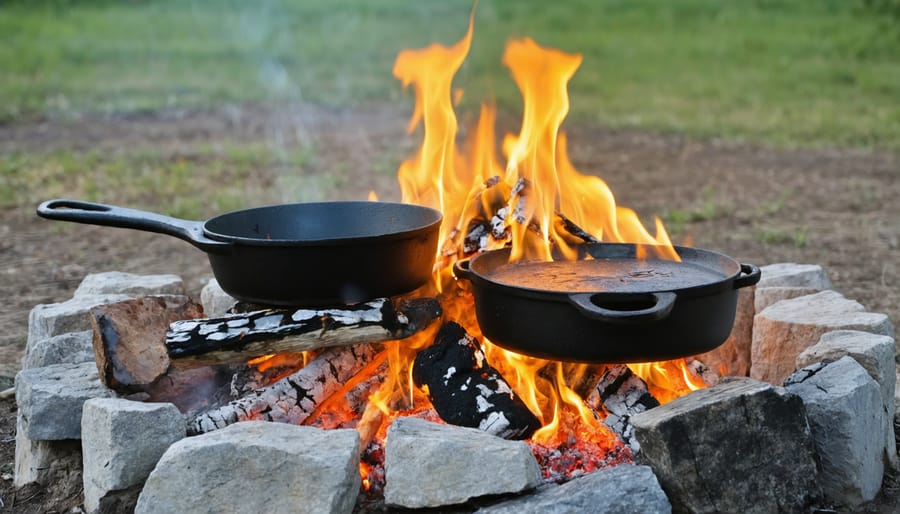
Essential Heritage Cooking Methods
Cast Iron Cooking
Cast iron cookware is a cherished part of outdoor heritage cooking, bringing authenticity and incredible flavor to your wilderness meals. The key to successful cast iron cooking outdoors starts with proper seasoning – a well-maintained pan develops a natural non-stick surface that improves with each use.
When cooking over a campfire, position your cast iron cookware on a stable grate or nestle it among hot coals for even heat distribution. For best results, let your pan heat up gradually before adding ingredients. A cast iron pan’s superior heat retention makes it perfect for searing meats, baking bannock bread, or slow-cooking hearty stews.
Keep your cookware clean by scraping food residue with a wooden spatula and wiping with a cloth. Avoid soap unless absolutely necessary, as it can strip the seasoning. After cleaning, dry thoroughly and apply a thin coat of oil before storing to prevent rust.
Pro tip: Pack your cast iron in a cotton bag rather than plastic to prevent moisture buildup, and always bring leather gloves or a thick handle holder – these pans get seriously hot!
Dutch Oven Mastery
The humble Dutch oven is a true gem of heritage cooking, carrying centuries of culinary tradition in its cast-iron walls. In Ontario’s outdoor settings, these versatile pots transform simple ingredients into hearty, soul-warming meals just as our ancestors did. The key to Dutch oven mastery lies in heat control – aim for a consistent temperature by placing hot coals both underneath and on the lid.
For authentic results, preheat your Dutch oven before adding ingredients, and remember the “three-up, three-down” rule: three coals on top for every inch of pot diameter, and three fewer underneath. When cooking stews or roasts, create a seal by placing the lid firmly and surrounding it with coals – this traps moisture and enhances flavors.
Here’s an insider tip: place a few maple or oak leaves under your Dutch oven to prevent scorching when cooking on uneven ground. For cleaning, never use soap – simply scrub with hot water and season with a light coat of oil after each use. This traditional method not only preserves the pot’s seasoning but also connects us to generations of outdoor cooking wisdom.
Open Fire Cooking
There’s something magical about cooking over an open fire, just as our ancestors did centuries ago. The dancing flames, crackling wood, and smoky aroma create an authentic outdoor cooking experience that no modern appliance can match. Traditional fire cooking starts with building a proper campfire using local hardwoods like maple or oak, which provide steady heat and enhance flavor.
For best results, let your fire burn down to hot coals – this creates the perfect cooking surface for cast iron cookware. Position your pots and pans using sturdy logs or rocks as supports, or invest in a traditional tripod setup. Remember to keep your fire contained and manageable, and always have water nearby for safety.
Expert tip: Try the “banking” method, where food is wrapped in leaves or foil and nestled into the coals. This slow-cooking technique was widely used by early settlers and Indigenous peoples, producing incredibly tender and flavorful meals.
Heritage Recipes Perfect for Ontario Parks
Morning Heritage Meals
Start your day with the heartwarming flavors of Ontario’s pioneer past. Bannock, a traditional Indigenous flatbread, remains a beloved breakfast staple that’s surprisingly simple to make over a campfire. Mix flour, baking powder, salt, and water into a dough, then wrap it around a sturdy stick to cook over the flames until golden brown – the perfect morning treat with a dollop of locally-sourced maple syrup.
Pioneer-style porridge offers another authentic taste of history. Unlike modern instant oatmeal, this hearty dish combines steel-cut oats, dried fruits, and nuts, slow-cooked to creamy perfection. For an extra touch of wilderness flavor, try adding foraged berries when in season. Many campers swear by the traditional method of starting their porridge the night before, letting it slowly absorb flavors by the dying embers of their evening fire.
Pro tip: Pack your dry ingredients in advance, measured and labeled in paper bags, to make morning preparation quick and easy. This not only saves time but also helps reduce plastic waste at your campsite.
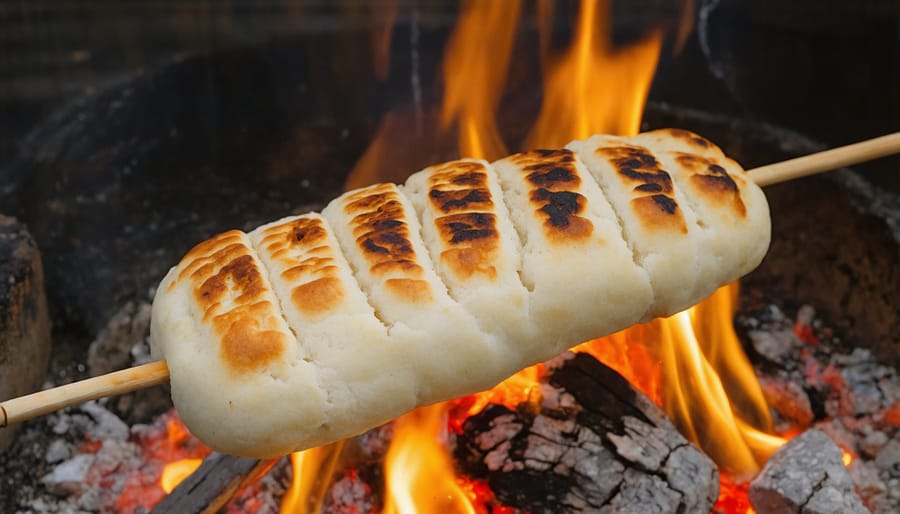
Historical Main Courses
Ontario’s historical main courses tell a rich story of pioneering spirit and resourcefulness. One of the most beloved heritage dishes is the hearty pork and beans stew, which sustained lumber workers during long winter months. Made with locally-sourced navy beans and salt pork, this filling meal would simmer all day in cast iron pots over open fires.
The traditional tourtière, brought to Ontario by French-Canadian settlers, remains a cherished recipe featuring a flaky pastry filled with spiced ground pork, potatoes, and onions. Early settlers would often prepare this dish for special occasions and holiday gatherings.
Fish dishes were also prominent, with freshwater catches like pike and whitefish being smoked or pan-fried with foraged wild leeks and mushrooms. The Indigenous influence brought us corn soup, made with traditional three sisters ingredients – corn, beans, and squash – often enhanced with wild game when available.
Another staple was the frontier-style pot roast, slow-cooked with root vegetables like carrots and potatoes. Settlers would add whatever herbs they could grow in their kitchen gardens, typically sage and thyme. For special occasions, families would prepare roasted wild turkey with bread stuffing, seasoned with local herbs and dried berries.
These recipes weren’t just meals – they were survival strategies that brought communities together, making the most of seasonal ingredients and preservation methods.
Traditional Trail Snacks
Long before energy bars and trail mix became popular, Ontario’s early settlers and Indigenous peoples had their own trusted trail foods for long journeys through the wilderness. Pemmican, a concentrated mixture of dried meat, berries, and fat, was the ultimate survival food that could last for months. This nutrient-dense snack provided sustained energy for portaging and hunting expeditions.
Another traditional favorite was bannock, a simple bread that could be easily prepared over a campfire. Carried as a dry mix in cloth bags, travelers would add water and cook it on flat rocks or wrapped around sticks. Wild berries, particularly blueberries and serviceberries, were collected along the way and either eaten fresh or dried for preservation.
Maple sugar cakes were also popular among both Indigenous peoples and settlers. These compact energy boosters were made by boiling down maple sap until crystallized, forming portable sweet treats that provided quick energy on the trail. For modern hikers looking to experience these heritage snacks, bannock mix and maple sugar cakes are still excellent, authentic choices that connect us to Ontario’s rich outdoor traditions.
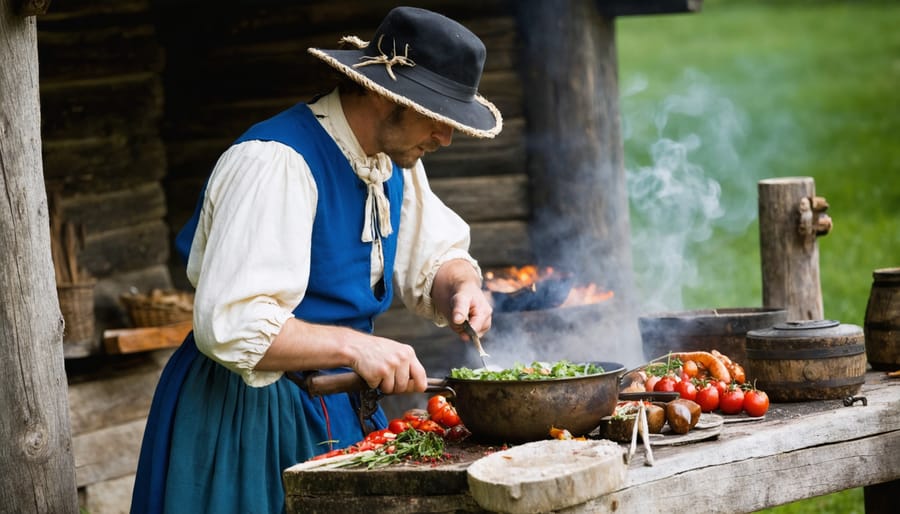
Best Parks for Heritage Cooking Experiences
Ontario’s provincial parks offer remarkable opportunities to experience traditional cooking methods at authentic heritage sites in Ontario Parks. Fort St. Marie in Midland Provincial Park stands out with its 17th-century cooking demonstrations, where interpreters in period costumes show visitors how early settlers prepared meals using cast iron pots and open hearths.
Bonnechere Provincial Park’s “Pioneer Experience” program lets visitors try their hand at cooking traditional recipes in restored log cabins. During summer weekends, park staff demonstrate heritage cooking techniques like bread baking in outdoor stone ovens and preparing wild berry preserves.
At Upper Canada Village near Long Sault, the heritage cooking experience reaches new heights. Visitors can participate in seasonal workshops where they learn to prepare authentic 1860s recipes using period-correct utensils and ingredients. The smell of fresh-baked bread from the village bakery and maple sugar making in spring are unforgettable experiences.
Fathom Five National Marine Park offers unique Indigenous cooking demonstrations during special events. Here, you can learn traditional methods of preparing fish and wild game, plus techniques for cooking with native plants and berries.
Pro tip: Many of these parks require advance booking for heritage cooking programs, especially during peak season. For the best experience, visit during heritage festivals and special events when additional demonstrations and hands-on opportunities are available. Don’t forget to bring your camera – these authentic cooking experiences make for wonderful memories and inspiring photos!
Heritage cooking in Ontario’s parks offers more than just a meal – it’s a gateway to connecting with our past, creating lasting memories, and experiencing nature in its purest form. Whether you’re roasting bannock over an open fire, preparing a traditional wild berry pie, or cooking fresh-caught fish using time-honored methods, these experiences bring history to life in ways that resonate deeply with both children and adults.
The simple act of preparing food as our ancestors did helps us appreciate the ingenuity of early settlers and Indigenous peoples while fostering a deeper connection to the land. It reminds us to slow down, be present, and savor not just the food, but the entire outdoor experience. The smell of woodsmoke, the crackle of the fire, and the taste of carefully prepared heritage recipes create sensory memories that last a lifetime.
Beyond the personal enjoyment, heritage cooking helps preserve important cultural knowledge for future generations. By practicing these traditional methods and sharing stories around the campfire, we become part of a living history that stretches back centuries. It’s a wonderful way to teach children about sustainability, resourcefulness, and the importance of maintaining our connection to nature and our shared past.
So next time you’re planning a park visit, consider incorporating some heritage cooking into your adventure. It might just become your family’s favorite new tradition.

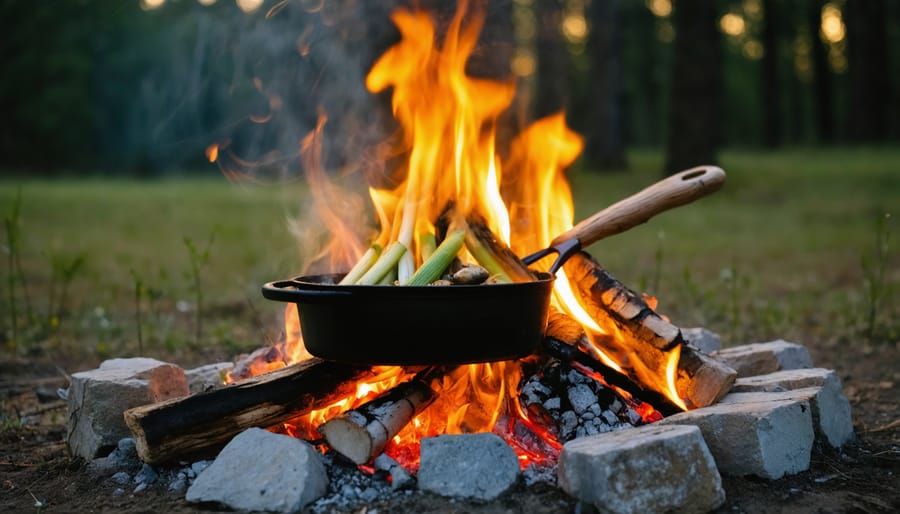
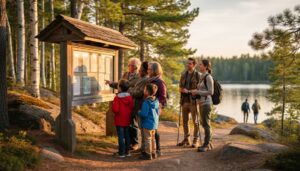
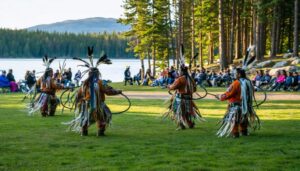

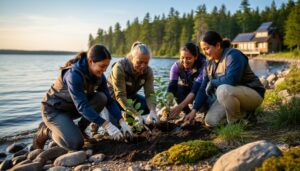
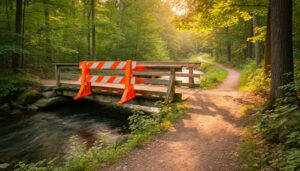

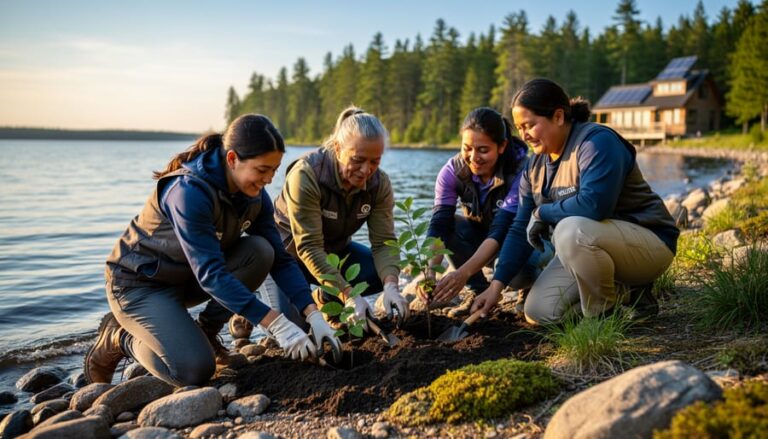
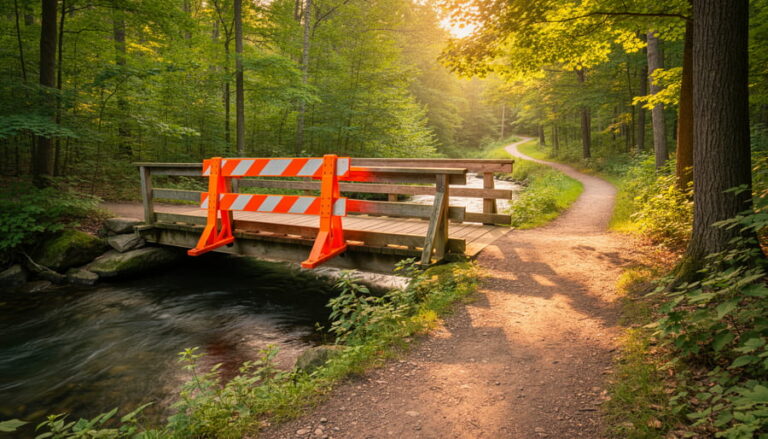
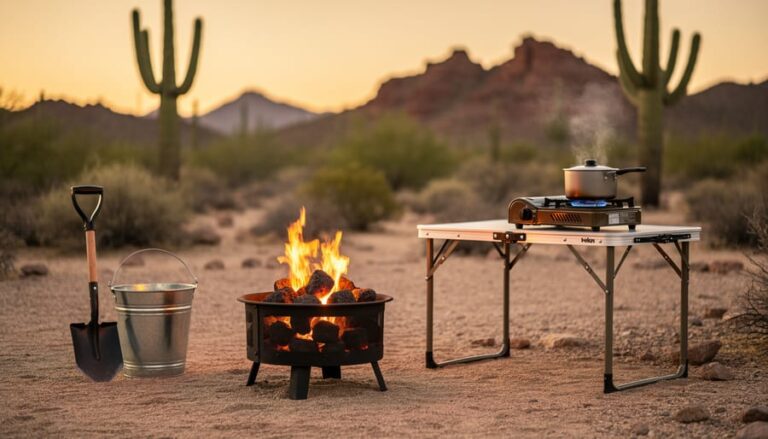



+ There are no comments
Add yours